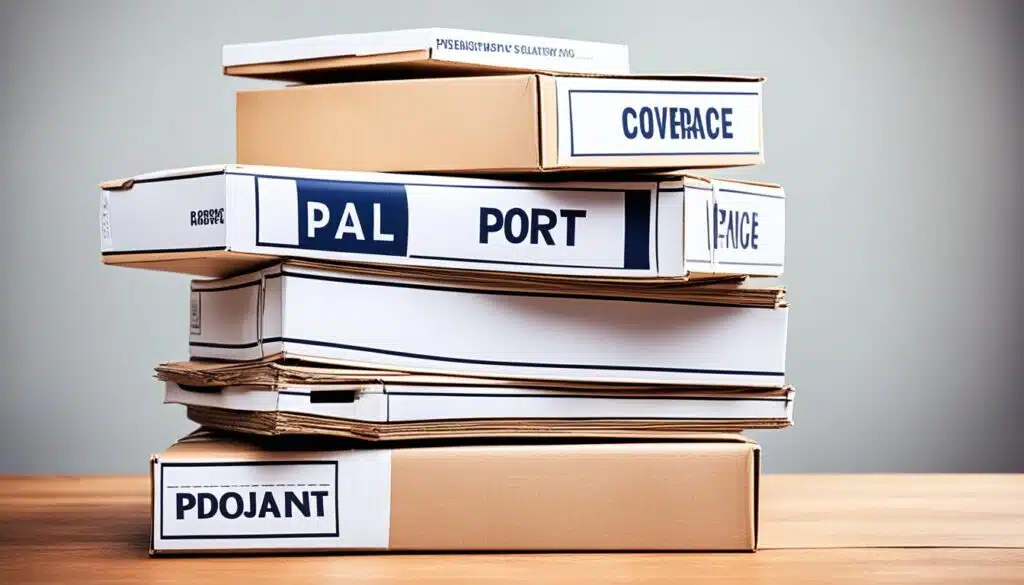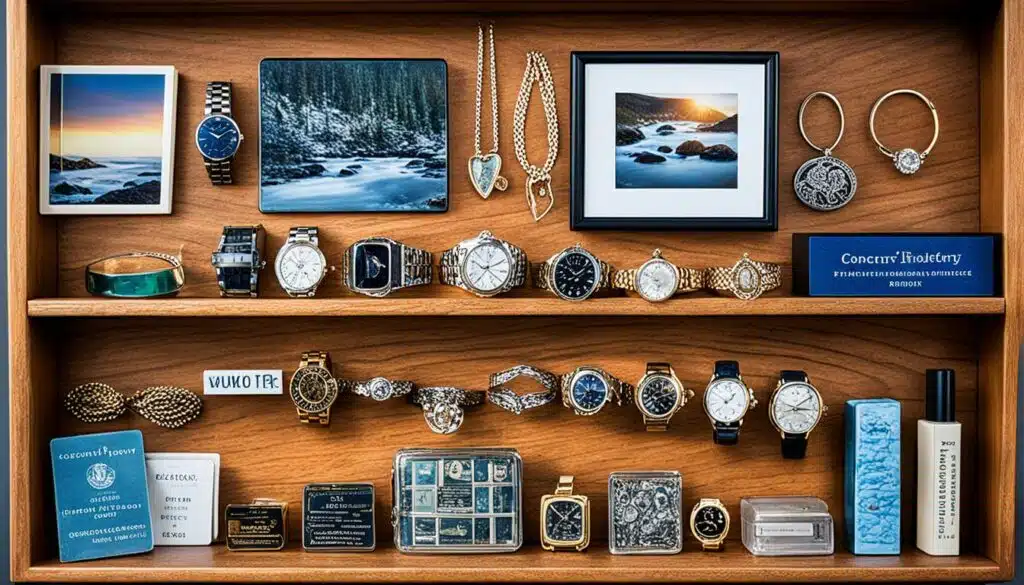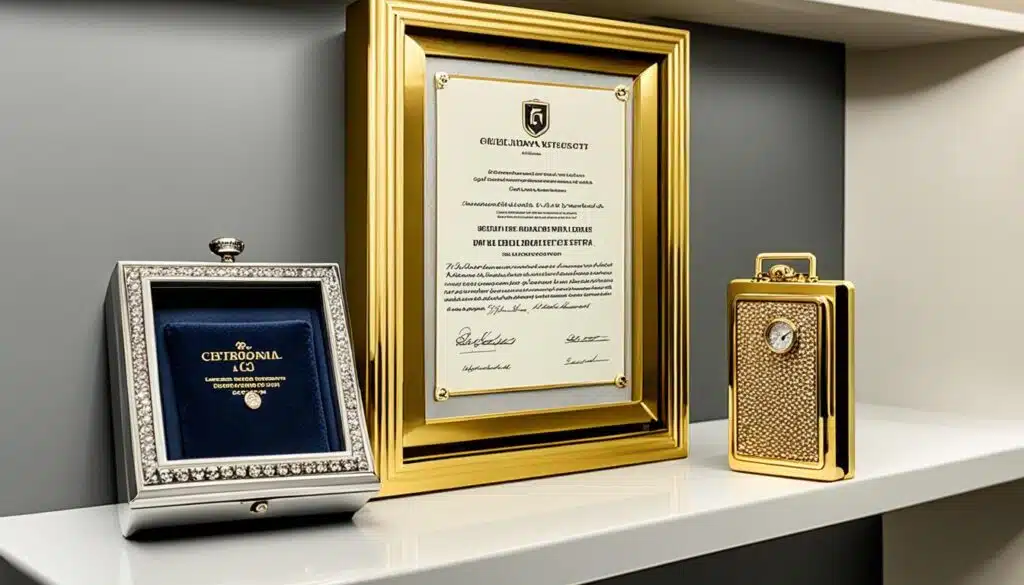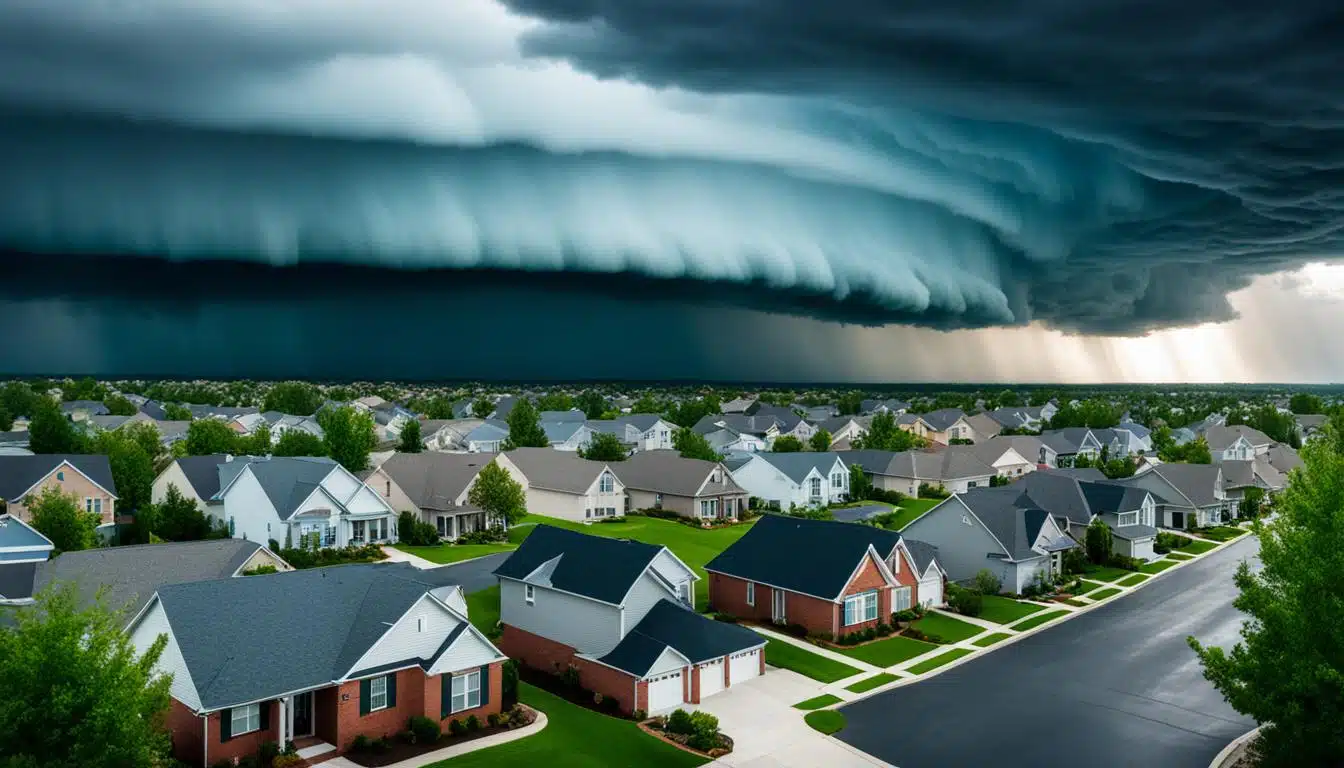When it comes to your home or rental property, protecting your personal belongings is essential. Accidents, theft, and unforeseen events can happen at any time, leaving you to deal with the financial burden of replacing your possessions. This is where personal property insurance comes into play. Whether you’re a homeowner or a renter, personal property insurance provides coverage for your belongings and offers valuable peace of mind.
Personal property insurance is typically included in homeowners insurance policies and renters insurance policies. It ensures that your belongings are protected from a range of hazards, such as fire, smoke, lightning, theft, and vandalism. In the event of damage, destruction, or theft, personal property insurance allows you to repair or replace your items without facing a significant financial setback.
Understanding the different coverage options for personal property insurance is important. Homeowners insurance policies generally provide personal property coverage as part of the overall coverage for the home. Renters insurance policies, on the other hand, focus solely on personal property coverage since the building itself is typically covered by the landlord’s insurance.
It’s essential to assess the value of your personal property to determine the amount of coverage you need. Creating a home inventory will help you track all of your belongings and their value. This inventory will serve as a valuable tool when determining your coverage limits. Additionally, certain high-value items like jewelry or antiques may require additional coverage or itemization to ensure they are fully protected.
With the wide range of personal property insurance options available, it’s important to explore the coverage options that suit your needs. Understanding what is covered under your policy, the coverage limits, and any exclusions will help you make an informed decision about the type and amount of coverage you require.
Key Takeaways:
- Personal property insurance is an essential part of homeowners and renters insurance policies.
- It provides coverage for your belongings in the event of damage, destruction, or theft.
- Understanding the different coverage options and determining the amount of coverage needed is crucial.
- Create a home inventory to track your belongings and their value.
- Consider additional coverage or itemizing high-value items for full protection.
What Is Personal Property Insurance?
Personal property insurance is a crucial component of homeowners insurance policies designed to protect your belongings from unexpected events that may cause damage or loss. It provides coverage for a wide range of hazards, including fire, smoke, lightning, theft, vandalism, and more. With personal property insurance, you can have peace of mind knowing that you have the financial means to repair or replace your possessions if they are damaged or stolen.
“Personal property insurance ensures that your personal belongings are protected against unforeseen circumstances and gives you the necessary resources to recover from unexpected losses.”
Whether you own a house, condominium, or rent an apartment, personal property insurance is a vital aspect of your homeowners insurance policy. It safeguards your belongings within your residence, providing coverage that extends beyond the structure of your home. Your personal property is essential, and personal property insurance ensures that it is adequately protected.
Unexpected events can strike at any time, and having personal property insurance in place is crucial to safeguard your belongings. For instance, if a fire breaks out in your home and damages your furniture and electronics, your personal property insurance will help cover the cost of repairing or replacing these items. In the unfortunate event of theft or vandalism, personal property insurance will also provide the necessary financial support to replace the stolen or damaged items.
The Importance of Personal Property Insurance
Your belongings hold significant value, both financially and emotionally. Personal property insurance offers comprehensive protection for your possessions, ensuring that you are adequately compensated in the event of unexpected loss or damage. It provides the following key benefits:
- Financial Security: Personal property insurance ensures that you have the necessary resources to replace or repair your belongings, reducing the financial burden that comes with unexpected events.
- Peace of Mind: Knowing that your belongings are protected against a wide range of hazards provides peace of mind, allowing you to focus on what matters most.
- Complete Coverage: Personal property insurance covers a broad range of items, including furniture, clothing, electronics, appliances, and more, giving you comprehensive protection for your belongings.
- Flexibility: Personal property insurance can be tailored to meet your specific needs, allowing you to choose the coverage limits that align with the value of your belongings.
Protecting your personal property with insurance is a worthwhile investment, giving you the assurance that unexpected events won’t leave you in financial distress or without your cherished belongings. Don’t underestimate the value of your possessions—insure them with personal property insurance.
What Does Personal Property Insurance Cover?
Personal property insurance provides coverage for a wide range of belongings, ensuring that your possessions are protected in case of unexpected events. Some of the items typically covered by personal property insurance include:
- Furniture
- Clothing
- Electronics
- Jewelry
These are just a few examples, and coverage can extend to many other types of belongings that you own. Personal property insurance gives you the peace of mind that comes with knowing your valuable possessions are safeguarded.
When it comes to personal property coverage, there are two main types: named peril and open peril.
Named Peril Coverage
Under a named peril policy, coverage is provided only for specific hazards that are explicitly listed in your policy. If your personal property is damaged or lost as a result of one of these named perils, your insurance will cover the costs for repairs or replacements. Common named perils include fire, theft, vandalism, and lightning.
Open Peril Coverage
On the other hand, some insurance policies offer open peril coverage for personal property. With open peril coverage, your belongings are protected against any type of loss or damage, unless specifically excluded from the policy. This means that you have broader coverage and are protected from a wider range of risks.
It’s important to review your policy to understand the specific coverage provided and any limitations or exclusions that may apply. This way, you can ensure that your personal property insurance meets your needs and provides the right level of protection for your belongings.

| Named Peril Coverage | Open Peril Coverage |
|---|---|
| Provides coverage for specific hazards listed in the policy | Covers any type of loss or damage, unless explicitly excluded |
| Limited coverage | Broader coverage |
| Protection against named perils such as fire, theft, vandalism, and lightning | Protection against a wide range of risks |
How Much Personal Property Coverage Do I Need?
The amount of personal property coverage you need depends on the value of your belongings. To determine the coverage amount, create a home inventory to track all of your belongings and their value. Some items, such as jewelry and antiques, may have set coverage limits within the base policy. If your valuables exceed these limits, you can consider increasing your coverage or itemizing your personal property to ensure they are fully protected.
Creating a Home Inventory
Creating a home inventory is an essential step in determining the amount of personal property coverage you need. It involves documenting all your belongings and their estimated value, which will help you accurately assess your coverage requirements. Here’s how you can create a comprehensive home inventory:
- Start room by room: Begin by going through each room in your home and documenting the items within. Make a list of the items and their estimated value.
- Take photos or videos: Capture visual evidence of your belongings by taking photos or videos. This will serve as additional documentation in case you need to file a claim.
- Keep receipts and appraisals: If you have receipts or appraisals for high-value items, be sure to keep them as proof of ownership and value. This will help speed up the claims process.
- Store your inventory securely: Keep your home inventory in a safe place, such as a fireproof safe or a cloud storage service, to ensure it remains protected and accessible.
Coverage Limits and Itemizing Possessions
Within your personal property coverage, there are often coverage limits for certain types of items. For example, your policy may only provide a maximum of $2,000 in coverage for jewelry. If you have highly valued possessions that exceed these limits, you may need to adjust your coverage.
If you have items that are particularly valuable, such as an engagement ring or an antique heirloom, you may choose to itemize them. Itemizing your possessions involves providing specific details and appraisals for these items to ensure they are fully covered. By itemizing, you can expand coverage for these highly valued possessions beyond the standard coverage limits.
Here’s an example of how coverage limits and itemizing possessions can impact your coverage:
| Item | Estimated Value | Coverage Limit | Additional Coverage Needed |
|---|---|---|---|
| Engagement Ring | $8,000 | $2,000 | $6,000 |
| Antique Heirloom | $10,000 | $2,000 | $8,000 |
| Laptop | $1,500 | N/A | N/A |
In this example, both the engagement ring and antique heirloom exceed the coverage limits set by the base policy. To adequately protect these items, you would need to expand your coverage by an additional $6,000 for the engagement ring and $8,000 for the antique heirloom. However, since the laptop does not exceed any coverage limits, it does not require additional coverage.

By conducting a home inventory and understanding coverage limits, you can ensure that your personal property is adequately protected. Don’t leave the fate of your highly valued possessions to chance; take the necessary steps to expand your coverage and have peace of mind knowing your belongings are well-insured.
What Is Itemized Personal Property?
Itemized personal property coverage is an optional add-on to your insurance policy that provides an increased level of coverage for higher-end items. It extends your coverage beyond what is listed in your base policy, offering additional protection for your valuable belongings. Commonly itemized items include jewelry, musical instruments, art, antiques, and other high-value possessions.
By adding itemized personal property coverage to your policy, you can ensure that these higher-end items are fully protected in the event of unexpected events that may damage or result in the loss of your belongings. It’s important to note that while itemized personal property coverage provides enhanced protection, it may come with higher premiums.
Including a comprehensive list of your higher-end items in your itemized personal property coverage offers peace of mind, knowing that your valuable possessions are safeguarded. Whether you own a collection of rare jewelry or significant artwork, itemizing personal property provides an extra layer of security for your higher-end belongings.
“Choosing itemized personal property coverage allows you to protect your most valuable and irreplaceable items, ensuring that they are fully covered in the event of a covered loss. While premiums may be higher, the peace of mind that comes with knowing your high-value items are protected is well worth it.”
Benefits of Itemized Personal Property Coverage
- Increased coverage for higher-end items
- Protection against unexpected events beyond base policy coverage
- Peace of mind knowing valuable belongings are fully protected
Here is a table that showcases the different options and coverage levels available for personal property insurance:
| Personal Property Coverage Options | Coverage Level | Typical Premiums |
|---|---|---|
| Base Policy | Coverage for standard personal property | Average homeowner’s or renter’s insurance premium |
| Itemized Personal Property | Increased coverage specifically for higher-end items | Higher premiums due to the extended coverage |

Personal Property Replacement Cost Coverage
When it comes to protecting your personal belongings, personal property replacement cost coverage offers the assurance that your items will be repaired or replaced with new ones of the same type, kind, and quality in the event of a covered loss. This coverage goes beyond the actual cash value (ACV) of your belongings, taking into account factors like age and condition. Instead, it pays based on the replacement cost value (RCV), which ensures full reimbursement for the cost of replacing your items.
With personal property replacement cost coverage, you can rest easy knowing that your damaged or lost possessions can be replaced without compromising on quality or value. Whether it’s furniture, electronics, clothing, or other personal items, this type of coverage allows you to repair or replace them with brand new equivalents.
“With personal property replacement cost coverage, you can rest easy knowing that your damaged or lost possessions can be replaced without compromising on quality or value.”
Let’s look at an example to better understand the difference between replacement cost value and actual cash value. Suppose your television, which is five years old, is destroyed in a covered event. The actual cash value would take into consideration the depreciation of the TV over those five years, resulting in a lower payout. However, with personal property replacement cost coverage, you would receive the amount needed to replace your TV with a brand new one of similar specifications.
Benefits of Personal Property Replacement Cost Coverage
By opting for personal property replacement cost coverage, you can enjoy several advantages:
- Optimal Protection: Ensures that your belongings are repaired or replaced with new items, maintaining the quality and value you deserve.
- Peace of Mind: Provides a higher level of financial protection, allowing you to bounce back from unexpected events without significant out-of-pocket expenses.
- No Depreciation Losses: Unlike actual cash value coverage, personal property replacement cost coverage does not factor in depreciation, ensuring that you receive the full value of the items being replaced.
To illustrate the benefits of personal property replacement cost coverage, consider the following table:

Note: The figures in the table are for illustrative purposes only and may vary depending on the specific insurance policy and circumstances.
This table highlights the key differences between personal property replacement cost value and actual cash value coverage. With personal property replacement cost coverage, you have the peace of mind that your belongings will be repaired or replaced without any significant financial setbacks.
Scheduled Personal Property Coverage
Scheduled personal property coverage is an additional type of coverage that offers extra protection for your valuable and expensive items, such as jewelry, artwork, musical instruments, and collectibles. Adding this coverage to your standard policy ensures that these items are fully protected in the event of damage, loss, or theft.
With scheduled personal property coverage, you can enjoy higher coverage limits specifically tailored to the value of your items. This means that if any of your scheduled items are damaged or stolen, you can receive compensation for their full value, rather than the limits set by your standard policy.
In addition to higher coverage limits, scheduled personal property coverage may also provide protection against additional perils not covered by your base policy. This further safeguards your valuable possessions, providing comprehensive coverage for a wide range of risks.
It’s important to note that premiums for scheduled personal property coverage may be higher due to the added protection and increased coverage limits. However, the peace of mind and assurance of full protection for your expensive items make it a worthwhile investment.
When considering whether to purchase scheduled personal property coverage, it’s recommended to assess the value and importance of your belongings. If you own valuable items that aren’t adequately covered by your standard policy, adding this extra coverage can provide the necessary protection and financial support in case of loss.
Benefits of Scheduled Personal Property Coverage
By opting for scheduled personal property coverage, you can enjoy the following benefits:
- Additional protection: Scheduled personal property coverage ensures that your high-value belongings are fully protected, reducing the risk of financial loss.
- Higher coverage limits: The coverage limits for scheduled items are typically higher than those for regular personal property coverage, providing better compensation in the event of a claim.
- Expanded coverage: This type of coverage often includes protection against a broader range of perils, ensuring comprehensive coverage for your valuable possessions.
Here’s an example of how scheduled personal property coverage can provide enhanced protection:
| Belonging | Value | Standard Policy Coverage | Scheduled Coverage |
|---|---|---|---|
| Diamond Engagement Ring | $10,000 | $1,000 | $10,000 |
| Artwork | $20,000 | $5,000 | $20,000 |
| Grand Piano | $50,000 | $10,000 | $50,000 |
As shown in the table, scheduled personal property coverage ensures that the full value of your items, such as an engagement ring, artwork, or a grand piano, is covered in the event of a covered loss. This type of coverage offers peace of mind, knowing that your expensive items are fully protected.

With the added protection provided by scheduled personal property coverage, you can have confidence that your valuable items are safeguarded against unexpected events. While premiums may be higher, the benefits and peace of mind make it a worthwhile investment for individuals who own expensive and cherished possessions.
What Is Not Covered Under Personal Property Insurance?
While personal property insurance provides essential coverage for your belongings, it’s important to understand the exclusions. Here are some items that are typically not covered under personal property insurance:
Cars: Personal property insurance is designed to cover your possessions, not your vehicle. To protect your car, you’ll need auto insurance.
Pets: Although pets are cherished members of our families, personal property insurance does not extend coverage to them. Consider obtaining pet insurance to protect their health and well-being.
Flying Items: Personal property insurance generally excludes coverage for items like drones, airplanes, and other flying devices. If you own these items, consider getting specialized coverage or liability insurance to protect against potential accidents.
Landlord Belongings: If you rent a property, your landlord’s belongings are not covered under your personal property insurance. The landlord should have their own insurance policy to protect their assets.
It’s important to review your policy’s exclusions carefully to understand what is not covered. Additionally, personal property insurance may not cover certain events, such as earthquakes. Considering specialized coverage for these items or perils can help ensure comprehensive protection for your personal property.
Also Read:- Decoding Coverage: Exploring Multiple Avenues For Home Insurance Rate Comparison
Remember, having the right coverage for your belongings provides peace of mind and financial protection. While personal property insurance is a valuable safeguard, it’s necessary to be aware of the exclusions and consider additional coverage options when needed.
Conclusion
When it comes to protecting your personal property, personal property insurance offers invaluable coverage options that provide peace of mind. By understanding the different coverage options available, determining the appropriate amount of coverage needed, and considering additional protection for high-value items, you can ensure that your belongings are safeguarded in the event of damage, destruction, or theft.
Personal property insurance is designed to shield your possessions and provide financial support in times of unexpected loss. Whether you are a homeowner or a renter, having this type of insurance ensures that you have the necessary protection to repair or replace your belongings without incurring a significant financial burden. It offers coverage for various hazards, including fire, theft, vandalism, and more, allowing you to confidently go about your life knowing that your personal property is safeguarded.
By investing in personal property insurance, you are not only protecting your physical belongings but also gaining peace of mind. Knowing that you have coverage in place can alleviate the stress and worry that comes with unexpected events. Whether it’s your furniture, electronics, jewelry, or other valuable possessions, personal property insurance gives you the assurance that you won’t be left empty-handed in the face of loss.
With personal property insurance, you can choose the coverage options that best suit your needs, ensuring that you have the right level of protection for your valuable belongings. So take the necessary steps to safeguard your personal property and enjoy the peace of mind that comes with knowing you are prepared for whatever life throws your way.
FAQs
Q: What is personal property insurance and why do I need it?
A: Personal property insurance provides coverage for your belongings, such as furniture, clothing, electronics, and other personal items, in the event of theft, damage, or loss. It is important to have this coverage to protect your assets and ensure that you can replace or repair your possessions in case of an unfortunate event.
Q: What items are typically covered by personal property insurance?
A: Personal property insurance typically covers a wide range of items, including furniture, clothing, appliances, electronics, jewelry, and other personal belongings. It is important to review your policy to understand the specific items covered and any limitations or exclusions.
Q: Is personal property insurance included in a standard homeowners policy?
A: Yes, personal property insurance is typically included as part of a homeowners policy. However, it’s important to review the limits of coverage and consider additional coverage options if you have high-value items that may exceed the standard limits.
Q: How does renters insurance cover personal property?
A: Renters insurance provides coverage for personal belongings within a rented property in the event of theft, damage, or loss. It is important for renters to consider this coverage to safeguard their personal property against unforeseen circumstances.
Q: How much coverage do I need for my personal items?
A: The amount of personal property insurance coverage needed varies based on the value of your possessions. It is recommended to conduct a thorough inventory of your belongings and assess their total value to determine the appropriate amount of coverage.
Q: What are some examples of personal property that are covered by personal insurance?
A: Examples of personal property covered by personal insurance include furniture, clothing, electronics, appliances, jewelry, artwork, and other valuable items that you own. It is essential to have coverage for these items to protect against potential risks.
Q: Can personal property coverage be added to a condo insurance policy?
A: Yes, personal property coverage can be added to a condo insurance policy to protect your belongings within the condo unit. It is important to consult with your insurance provider to ensure that you have adequate coverage for your personal items.
Q: What should I consider when determining the amount of personal property insurance coverage I need?
A: When determining the amount of personal property insurance coverage needed, you should consider the total value of your belongings, any high-value items that may require additional coverage, and any specific risks or hazards in your area that may impact your personal property.
Q: How does personal property insurance coverage help in the event of a fire or natural disaster?
A: Personal property insurance coverage can help in the event of a fire or natural disaster by providing the necessary funds to repair or replace your belongings that have been damaged or destroyed. It offers financial protection and peace of mind during challenging times.
Q: Do I need personal property insurance if I already have a standard home insurance policy?
A: While a standard homeowners insurance policy includes coverage for personal property, it’s important to review the limits and assess whether additional coverage is needed based on the total value of your belongings. Depending on the value and type of personal items you own, you may require additional personal property insurance.




